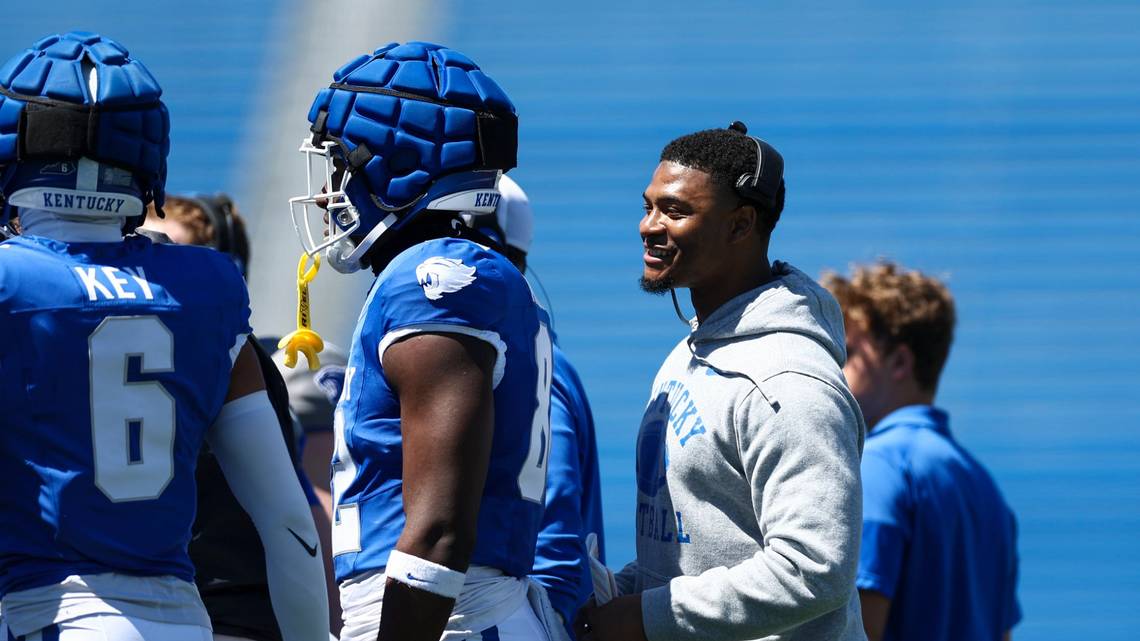Mark Stoops stands at a critical juncture in his tenure as head coach of the Kentucky Wildcats football program. As the 2025 season unfolds, Stoops faces a complex blend of hurdles and prospects in his ongoing mission to elevate Kentucky football to new heights in the fiercely competitive landscape of college football’s Southeastern Conference (SEC).
Kentucky football has long battled the perception of being an underdog within the SEC, a conference widely regarded as the most competitive in the nation. For years, the Wildcats have struggled to consistently compete against traditional powerhouses such as Alabama, Georgia, LSU, and Florida. This reality places a considerable amount of pressure on Stoops, who took over the program in 2013 with a vision to turn Kentucky into a perennial contender.
One of the most significant challenges Mark Stoops faces is the level of competition inherent in the SEC. The conference’s dominance in recruiting, resources, and national attention creates an environment where even incremental progress can be a monumental task. Kentucky has made strides in recent seasons, including bowl appearances and occasional upsets, but consistently contending for the conference title remains elusive.
Recruiting continues to be a pivotal hurdle for Stoops. Kentucky, traditionally known as a basketball school, often finds itself at a disadvantage in attracting top-tier football talent when compared to its SEC rivals. The Wildcats must compete not only against the state’s high school prospects but also against national powerhouses with deeper recruiting pipelines. While Stoops and his staff have shown an ability to identify and develop overlooked talent, the challenge remains to consistently bring in blue-chip recruits who can immediately impact the program.
In 2025, the recruiting landscape has evolved further with the introduction of Name, Image, and Likeness (NIL) opportunities, which have reshaped how college programs attract players. Kentucky’s market size and brand recognition lag behind the SEC’s biggest football schools, which offer players greater exposure and endorsement opportunities. Stoops must navigate this new reality creatively, highlighting Kentucky’s academic strengths, player development track record, and community culture to remain competitive in the recruiting battle.
Injury management and depth have also posed persistent obstacles for Kentucky under Stoops. The physical demands of SEC football require a deep roster to sustain performance through the grind of the season. Kentucky’s roster depth, particularly in key positions such as quarterback, offensive line, and secondary, has at times been stretched thin, impacting the team’s ability to finish strong in critical games. Building greater depth through recruiting, transfers, and player development will be vital for sustained success.
Despite these challenges, there are reasons for optimism as Stoops continues his tenure. Kentucky football has steadily improved its infrastructure and resources in recent years, reflecting a growing institutional commitment to the program’s success. Upgrades to training facilities, investment in sports science, and enhanced support staff signal that the university is serious about competing at a higher level. These improvements provide a foundation for attracting better recruits and improving player performance.
One of Stoops’ greatest assets remains his reputation as a player developer and a coach who builds strong team culture. Over his years at Kentucky, Stoops has cultivated a reputation for turning raw or overlooked recruits into impactful SEC players. His defensive background has helped Kentucky consistently field competitive defenses, which have kept the Wildcats in games against more talented opponents. This identity can serve as a launching pad for further growth as the program seeks to balance strong defense with more explosive offensive production.
The 2025 season itself presents unique prospects for Stoops and Kentucky football. The Wildcats have been active in the transfer portal, a dynamic new element in college football that allows programs to fill immediate roster needs more quickly. By strategically targeting experienced transfers, Kentucky can shore up weak spots and accelerate the development process. However, integrating transfer players into the team’s culture and system remains a delicate process that requires careful management.
Another promising aspect for Kentucky is the development of young players who have shown flashes of potential in previous seasons. Emerging talents at quarterback, running back, and key defensive positions offer hope for improved consistency and leadership on the field. If these players can take the next step in their development, Kentucky’s competitive ceiling will rise substantially. For Stoops, this means continuing to provide opportunities, coaching, and support to maximize their growth.
The Wildcats’ schedule in 2025 also shapes the opportunities and risks ahead. Facing some of the SEC’s toughest opponents means Kentucky must bring its best game week in and week out. However, a balanced schedule that includes non-conference games offers opportunities to build confidence and momentum early in the season. Stoops and his coaching staff will need to prepare the team to capitalize on these chances to build a winning culture and gain national attention.
Off the field, Stoops faces growing expectations from fans, alumni, and the university administration. The rise of social media and 24/7 sports coverage means every game, every decision, and every player development milestone is scrutinized closely. Managing these external pressures while maintaining focus on long-term program goals is a balancing act that requires leadership and resilience.
Financial pressures and the broader business of college football also impact Kentucky’s football program. The increasing revenue generated by the SEC through television contracts and sponsorship deals creates a widening gap between elite programs and those still building. Kentucky must ensure that it continues to invest wisely in facilities, coaching staff, and recruiting budgets to keep pace with conference rivals. At the same time, maintaining academic standards and supporting player welfare remain critical pillars of the program’s identity.
Mark Stoops’ vision for Kentucky football goes beyond just winning games. He aims to build a program that develops young men into leaders on and off the field, representing the university with pride and integrity. This holistic approach, while not always yielding immediate wins, builds a sustainable foundation that can support long-term success.
Community support remains a vital ingredient in Kentucky’s football revival. The Wildcats enjoy passionate fan support, and as the team shows progress, the energy and attendance at games have improved. This momentum not only enhances the game-day atmosphere but also boosts the players’ morale and helps with recruiting. Stoops continues to engage with fans, alumni, and local communities to strengthen this connection.
Looking ahead, the next few years will be defining for Mark Stoops and Kentucky football. The program’s ability to overcome recruiting challenges, develop talent, and compete in a brutal conference environment will determine if Kentucky can rise from its underdog status. The potential rewards include not only winning seasons and bowl appearances but also a transformation into a respected SEC contender.
Stoops has demonstrated patience and persistence throughout his time at Kentucky, traits that will be tested as the 2025 season unfolds. His success will depend on adapting to new college football realities, maximizing resources, and inspiring his team to believe in their ability to compete with the best. If Stoops can navigate these hurdles while capitalizing on the prospects before him, Kentucky football’s revival may be well underway.
In conclusion, Mark Stoops’ journey to revive Kentucky football in 2025 is marked by a mix of formidable challenges and exciting opportunities. The competitive nature of the SEC, recruiting battles, roster depth, and evolving college football dynamics create a difficult path. Yet, with institutional support, a culture of player development, strategic use of transfers, and emerging young talent, Stoops has a viable roadmap to success. How well he executes on this plan will shape the future of Kentucky football and determine whether the Wildcats can carve out a stronger place in college football’s elite landscape.



